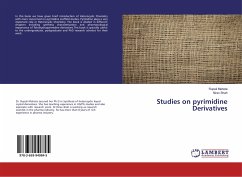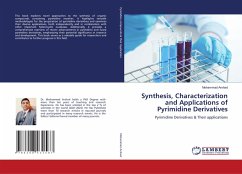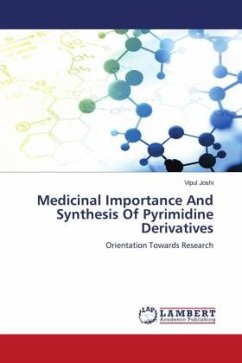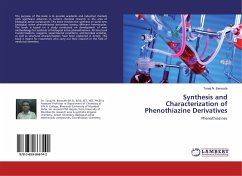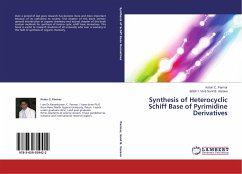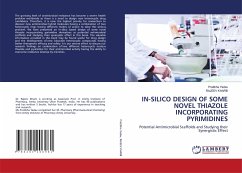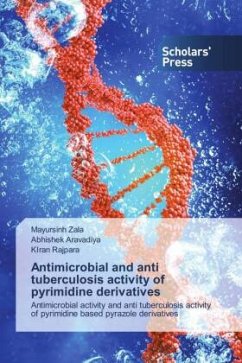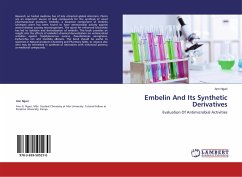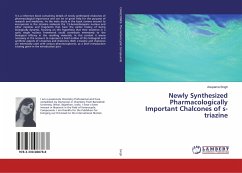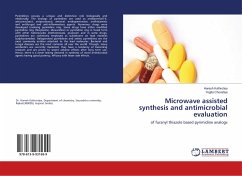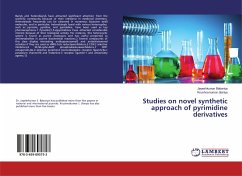
Studies on novel synthetic approach of pyrimidine derivatives
Versandkostenfrei!
Versandfertig in 6-10 Tagen
27,99 €
inkl. MwSt.

PAYBACK Punkte
14 °P sammeln!
Biaryls and heterobiaryls have attracted significant attention from the scientific community because of their relevance in medicinal chemistry. Heterobiaryls frequently can be observed in numerous bioactive small molecules, and in particular, heterobiaryls fused with various heterocycles, such as pyrazole, pyridine, and pyrimidine, have been used as key pharmacophores.1 Pyrazolo[1,5-a]pyrimidines have attracted considerable interest because of their biological activity. For instance, this heterocyclic system is found as purine analogues and has useful properties as antimetabolites in purine bi...
Biaryls and heterobiaryls have attracted significant attention from the scientific community because of their relevance in medicinal chemistry. Heterobiaryls frequently can be observed in numerous bioactive small molecules, and in particular, heterobiaryls fused with various heterocycles, such as pyrazole, pyridine, and pyrimidine, have been used as key pharmacophores.1 Pyrazolo[1,5-a]pyrimidines have attracted considerable interest because of their biological activity. For instance, this heterocyclic system is found as purine analogues and has useful properties as antimetabolites in purine biochemical reactions.2 Several compounds of this class display interesting antitrypanosomal3 and antischistosomal activities.4 They are used as HMG-CoA reductaseinhibitors,5 COX-2 selective inhibitors,6 30,50-cyclic-AMP phosphodiesteraseinhibitors,7 CRF1 antagonists,8a-d selective peripheral benzodiazepine receptor ligands,9a-c potassium channel10 and histamine-3 receptor ligands11 and antianxiety agents.12



